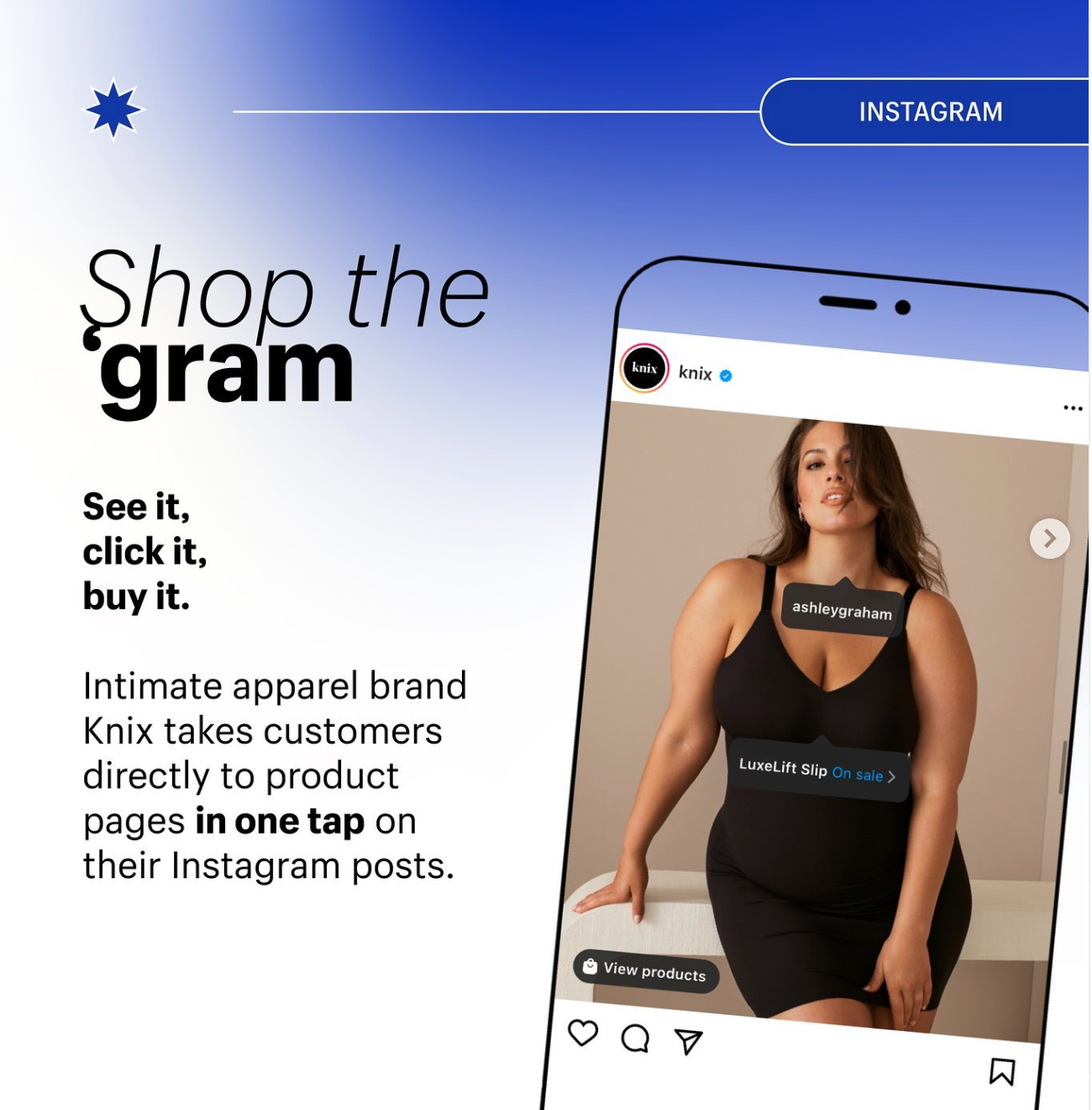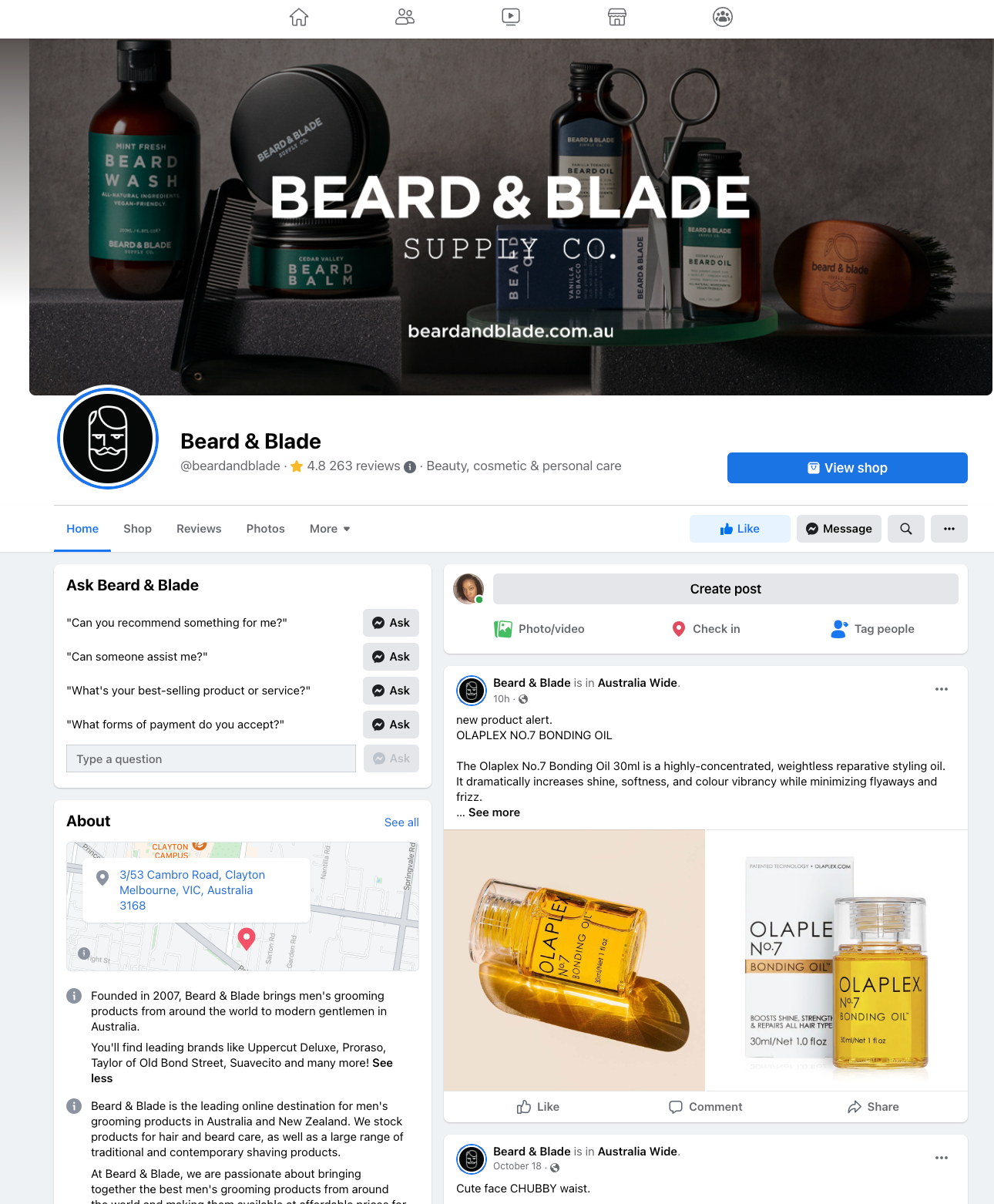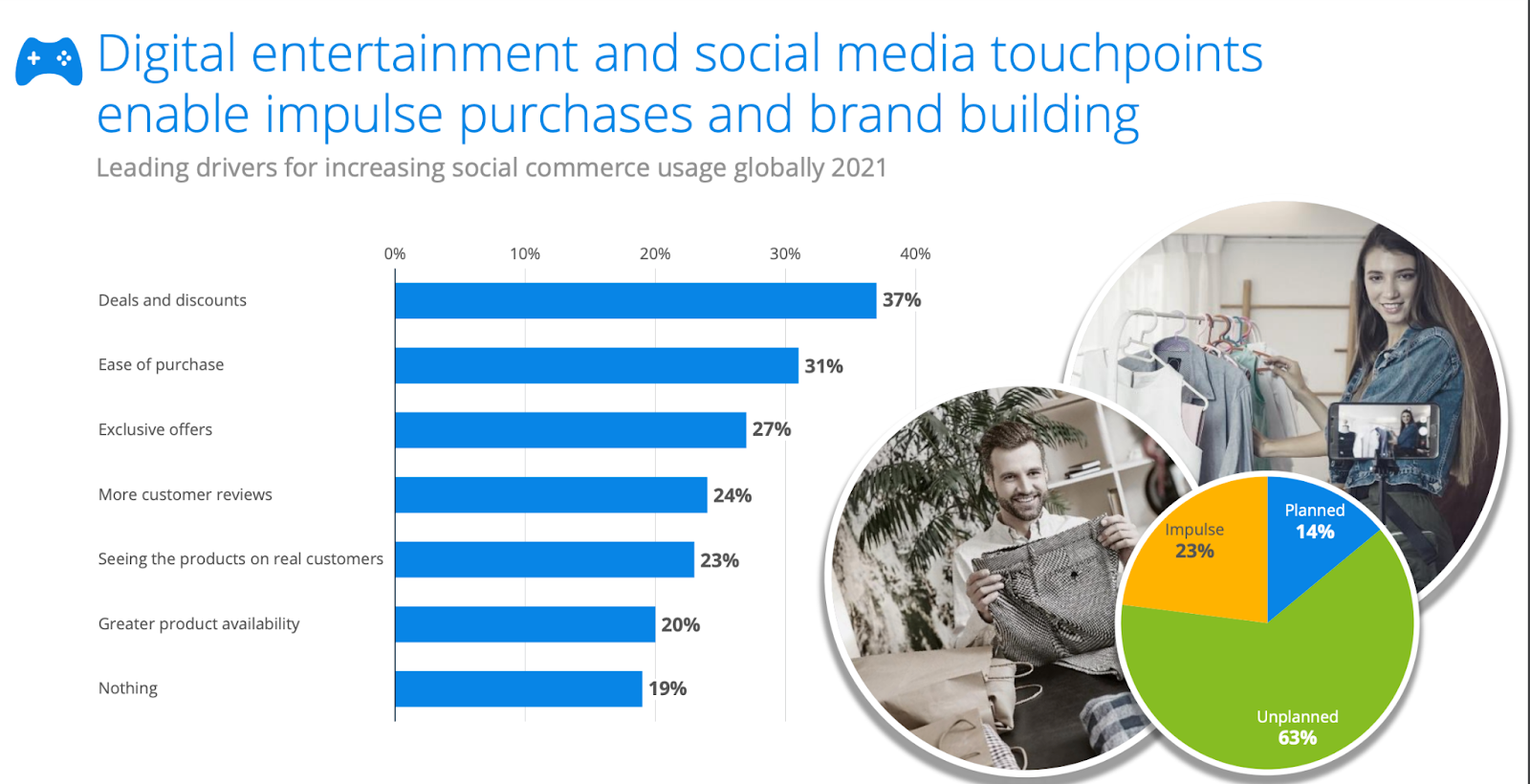According to Accenture, social commerce sales reached $492 billion worldwide in 2021 and are forecasted to triple to $1.2 trillion by 2025. The market opportunity is vast for retailers willing to embrace a human-centric approach to online shopping that can strengthen consumer relationships.
Shopify data shows that 49% of brands plan to increase their investment in social commerce this year. When developing a social commerce strategy, businesses should consider how they can use social commerce platforms to create a more humanized shopping experience that meets consumers’ needs and drives conversions.
Let’s take a look at nine social commerce strategies that can improve your social selling efforts in 2023.
9 strategies for social commerce success
Any brand hoping to cash in on growing social commerce trends must consciously create a strategy grounded in consumer understanding, thoughtful channel selection, and routine performance measurement. Let’s look at nine social commerce strategies to help you capitalize on this opportunity.
1. Meet your customers where they are
To create a successful social commerce strategy, retailers must first recognize that it’s not about them. It’s about the customer.
“If I were starting from scratch, I would spend some time listening from the customer’s perspective and coming up with a vision for our social commerce strategy,” explains Timothy Hughes, author of Social Selling: Techniques to Influence Buyers and Changemakers.
“It has to be about community, not commerce.” —Timothy Hughes
First, identify where your target customers spend their time. Doing this research upfront will ensure that you are investing in the right social commerce platforms to connect with them.
Consult the demographic data for popular social commerce platforms to see how they align with your target customer.
Also, research top competitors to see what platforms they use and what their engagement is like to inform your own social commerce strategy.
Take Knix, an intimate apparel brand. It’s done the research to understand that thitsir target customers look to Instagram for inspiration. So, it make it incredibly easy for customers to go from IG to product pages in one tap.

2. Create highly engaging content
Engaging, relevant, and high-quality content can correlate to higher sales. Data from Sprout Social shows that 57% of consumers will increase their spending with a brand they feel connected to. There are many ways to create memorable content that helps buyers feel more connected with your brand. Here are a few places to start.
3. Make your content audience-focused
Whether it’s a Facebook shop, Instagram shop, or Pinterest storefront, the number one key to selling on social media is publishing audience-focused content, according to Joe Troyer, CEO and Growth Advisor at Digital Triggers.
“If you’re a service-based business, publish social commerce content that targets your exact audience, helping them solve problems, achieve their goals, and remove their struggles. This will automatically build trust, leading to sales,” says Troyer.
“Consumer brands should publish content that their audience enjoys. For instance, if you’re a boxing equipment brand, publish content related to boxing: Muhammad Ali or Mike Tyson’s boxing tips, motivational reels, quotes, and more. Gather the right tribe around your brand.”
For example, Shopify Plus customer Boxraw is using the poster of the upcoming film Creed III to get its audience pumped.

4. Show behind-the-scenes content
This is especially effective if you’re a new business, launching a new product, or aiming to generate brand awareness. Offering a behind-the-scenes peek at your brand and how the proverbial sausage gets made can create a deeper connection with your audience, help tell your brand’s story, and keep your followers coming back for more. Use this opportunity to share what makes your company special or give shoppers unique insights they wouldn’t usually see from a brand like yours.
Grace Eleyae, an ecommerce merchant offering a variety of satin products that help protect your hair, recently gave viewers an inside look at how to pronounce the company’s name.

5. Encourage UGC (user-generated content)
This type of content can help build credibility for your brand. Your social commerce strategy will be more effective when you leverage social proof. This includes customer reviews and encouraging customers to post their own photos or videos of themselves unboxing or using your product and tagging your company. See BlenderBottle for inspiration.

6. Co-create with micro-influencers
Develop partnerships with popular influencers in your category to broaden your reach, build brand affinity, and cultivate credibility with that influencer’s audience. But instead of looking for the personalities with the most followers, opt for the most relevant influencers with the most engaged followers—also known as micro-influencers.
These content creators have built a tight-knit community that trusts their recommendations. As a result, influencer marketing is set to be worth $16.4 billion in 2022.

Allow the influencer to put their perspective on the campaign. But Hughes warns against treating influencer marketing like a paid media channel: “It’s no longer good enough just to have Kim Kardashian wear your shoes and tag them on social.”
To create more authentic experiences, brands must work hand-in-hand with influencers to co-create content that truly speaks to their unique audience’s interests. And the content must be insightful, educational, or entertaining, to guide an audience’s purchase decisions.
Shopify Plus partner HiSmile works with well-known celebrity names like Kylie Jenner and Conor McGregor, and utilizes social media to spread the word about its teeth-whitening products.

7. Test live shopping
Livestreams are a great way to combine the interactivity of in-person shopping with the convenience of ecommerce. Try hosting live Q&As, demos or tutorials, or product launches. And use the opportunity to answer customer questions in real-time, removing barriers to purchase and creating personalized connections. Be sure to utilize product hashtags directly in your live broadcasts, which allows your audience to purchase products on the spot.

“Livestreams are a great way for potential customers to get to know you as a brand and to answer questions they may have,” says Michael Bell, founder and CEO of Manukora. “Be sure to include where to purchase your products in the livestream and then drop your online store in the comments to make it easy to increase sales.”
Some early adopters of live shopping have reported conversion rates of up to 30%, which is 10 times higher than conventional commerce.
Consider combining live shopping with influencer marketing to extend your reach even further. Statista data shows that of those who frequently watch influencer livestreams, 70% are likely to buy the products recommended.
8. Optimize for social search
According to an internal study by Google, 40% of 18- to 24-year-olds now use social media as their primary search engine.
Brands that want to win in the social commerce space in 2023 must master the basics of social search optimization.
It starts with your content strategy. Focus on creating relevant content that will resonate with your target audience. If the content is good, it’s much more likely to perform well.
From there, take notes from Beard & Blade by nailing down your SEO fundamentals:
Optimize your social media profiles
Make it easy to navigate
Write a clear and compelling bio
Include an on-brand profile photo
Geotag your posts
Make sure your location is accessible for local search
Use alt text on your creative assets
These simple steps can help ensure your social commerce content is more discoverable and engaging.

9. Cultivate trust.
An Accenture survey of 10,000 customers reveals that a lack of trust is a top concern for social commerce buyers. Shoppers are worried that their purchases won’t be protected or refunded. They’re also concerned about the quality and authenticity of products sold via social commerce channels and fear sharing their financial data with social networks.
“Customers have lots of choices. And trust is an important part of that choice,” explains Dutta Satadip, Chief Customer Officer at ActiveCampaign. “To get that trust, people are not only using the overall branding and what the influencers are saying, but they’re going and looking at reviews, talking to other people, and then figuring out if it’s the right choice for them.”
Brands looking to establish trust as a part of their social commerce strategy should focus on the following:
Reliable fulfillment
Purchase protection
Hassle-free refunds and returns
10. Make purchasing easy
Social commerce makes it easy to move customers from product discovery to purchase without leaving the apps they know and love. The more convenient you make it, the less cart abandonment you’ll experience.
11. Invest in social checkout
Today, many enterprise brands still look at their website as the place where commerce happens. But connecting with customers on social media and then trying to shuffle them over to your online store to complete a purchase creates friction that will lead to cart abandonment.
Leverage native checkout features that allow shoppers to buy from right inside the social media platform.
12. Lean on bots to close more sales
Automated social shopping bots can add conversational prompts that help move your followers through the customer journey. They also allow you to close sales 24/7 while reducing cart abandonment.
That said, Hughes cautions against relying too heavily on AI to help execute your social commerce strategy. “People don’t come to social to read brochures,” he says. “Social media is about being social.” It’s an excellent opportunity to create a dialogue between your brand and your consumers.
People follow you on social media because you’re educating or entertaining them. They’re coming to you because they feel a connection. “I think that what happens with AI is we actually break the connection,” says Hughes.
Brands must find a balance between leveraging bots to increase conversions, while finding other ways to maintain their connection to consumers.
13. Create seamless, shorter paths to purchase
When it comes to ecommerce, convenience is king. So aim to craft an end-to-end purchase process across all key channels with as few steps as possible.
You’ll need a seamless, omnichannel social commerce approach that integrates your online and in-store experiences to connect with and convert social media browsers into customers. And it must be informed by your customer data and insights.
Integrate your ecommerce provider with social commerce platforms
“This is a no-brainer,” says Volodymyr Shchegel, VP of Engineering at Clario. “This allows you to make ads and shoppable posts that reflect your branding and will generate leads to your ecommerce website. While networks like Facebook have a native shopping platform, you’ll want the privacy, flexibility, and multichannel support of an independent ecommerce platform.”
Remove friction and create a more seamless customer experience by integrating your ecommerce and social commerce platforms. This ensures that your inventory is always accurate, your product catalog is up to date, and you’re promoting the right products at the right time.
14. Put customers first
Social commerce is inherently tied to making shopping more convenient for new and existing customers. Focus less on the needs of your brand and more on the needs of the customer, and you’ll go far.
15. Respond to support questions
A Sprout Social survey finds that brands’ biggest mistake with social commerce is failing to respond to customer questions or comments.
“Unanswered questions, complaints, or praise in the comments or on your page are taken more personally than on platforms like Yelp or Google Reviews,” says Gates Little, President and CEO at altLINE Sobanco. “Social media implies closeness and access that is personal to the customer, and neglecting them has a strong impact.”
However, generating interest from your social commerce efforts is only the beginning. Next, you need to nurture that interest. Failing to do so means missing out on ecommerce sales opportunities.
Actively monitor the comments, and DMs received via social media, especially those related to ingredients, compatibility, shipping, etc., and respond proactively.
Consider incorporating a chatbot to answer simple questions when your staff is unavailable, but give customers the option to receive a callback if they’d prefer to speak to a representative.
16. Focus on adding value
While the goal of social commerce is ultimately to drive sales, social media is very different from other marketing channels.
“People are addicted to this notion that marketing is about interruption,” says Hughes. “I stand on top of a building and I shout, and the louder I can shout, the better it is. And what I shout is, ‘Buy my product, because it’s great.’ But the problem is that everybody does that.”
Instead, find ways to add value to social media users. For example, how can you entertain and educate them while also helping them understand how your product works, how it can benefit them, or how they can use it in their everyday lives?
An influencer video showing how to use your product, combined with product tags, is an effective way to help your audience learn something while also nudging them toward making a purchase.
17. Stay top of mind
Accenture reported that 63% of social buyers said they are more likely to buy from the same seller again. So by nurturing your social commerce customers, you have a much higher chance of repeat purchases. Here are three ways to stay top of mind with your social commerce customers:
Offer coupons: Data from ActiveCampaign shows that 42% of all consumers said they’d be willing to engage with a new brand on social media if discounts are offered. Custom, limited-time digital coupon codes offered across social platforms can help entice shoppers to make their first purchase with you and help you generate leads for future marketing efforts.
Push your loyalty program: Once customers have made a purchase, offer them a chance to join your loyalty program. Loyalty programs can further customer connections by offering insider deals, discounts, and special incentives for repeat customers.
Encourage customer reviews: Create an automated email asking customers to leave a review when they’ve made a purchase, with a link or a QR code that points them to where they can leave their review. You can even use incentives, such as coupon codes or limited-time discounts, to encourage customers to take the time to write a review.

Source: Censuswide; Wunderman Thompson; magazine media; ID 1275069 / Publicis; TikTok for Business; WARC; Statista
“Developing the perfect deal or exclusive discount can significantly increase your sales volume and social commerce conversions for specific products or at a particular time of year, such as the holiday season,” says Zach Goldstein, CEO and founder of Public Rec.
This could look like using buy-one-get-one or half-off deals for returning online shoppers or discounts on a new shopper’s first three purchases through your social shop.
Ecommerce businesses can also use a referral program to encourage shoppers to share a link to your social storefront for discounts. Experiment and see what sticks. Once you master social commerce, you can expand your brand reach to a broader audience.
18. Leverage data
Most social media channels provide analytics. Be sure to use those insights to help inform and iterate on your social commerce strategy. Ultimately, data should guide the design and functionality of your social commerce storefronts.
Look at user engagement, your posts’ performance, and your audience’s demographic breakdown.
Some platforms will show you deeper social commerce insights, such as the number of times a user tapped on a product tag and the number of people who visited your product page from a post.
Turn analytics into actionable insights by figuring out your top-performing posts and doubling down on that type of content. Also, look at posts that could have performed better and consider small changes you can make to future posts to increase engagement throughout the buying process.
Social commerce strategy FAQ
What is a social commerce strategy?
A social commerce strategy is an approach to using social media platforms for buying and selling products or services.
An extension of your overall marketing strategy, your social commerce strategy dictates how you will execute and measure your social commerce presence and campaigns.
This includes, but is not limited to, deciding which platforms you’ll sell on, what products you’ll promote and include in your social shops, and how you’ll leverage other channels, such as paid advertising, to support your social commerce goals.
Why do I need a social commerce strategy?
Social media is the preferred shopping channel for millennials and Gen Z. In fact, 55% of US internet users in this demographic group made an in-app purchase on social media in 2021. So brands that want to reach this audience must show up and be active where they hang out.
What are the benefits of a social commerce strategy?
Increased brand awareness and product discovery
Expanded reach
Improved conversion rates
A more personalized shopping experience
The ability to assess engagement and conversions to inform future campaign
Read more
- B2B Sales Funnel: How to Identify Which Stage Your Buyer is In and Convert Them into Customers—Fast
- New York Fashion Week 2020 Trends: Sustainability, Made-to-Order and Off-Runway
- 10 Best Books Recommended By Ecommerce Leaders (+ Lessons Learned)
- How Luxury Fashion Is Embracing Inclusive Sizing
- The 9 Biggest Consumer Behavior Trends That Will Shape 2023
- 4 Trends for Commerce from Mary Meeker’s COVID-19 Internet Trends Report
- The Giving Economy: How Consumers Are Paying It Forward to Retailers
- What is an Order Management System (OMS)? Your Guide to Choosing One
- Composable Commerce: What It Means and if It’s Right for Your Business





